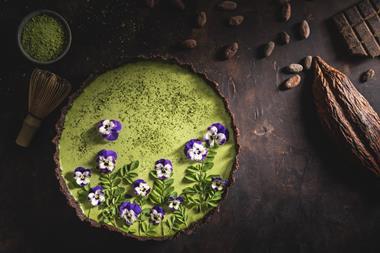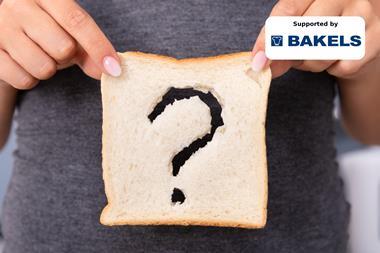A trend towards simplicity and more natural products is leading bakers to explore the use of ancient and sprouted grains to achieve a healthier, and tastier, offer
Our ancestors might not have been able to take a selfie or binge-watch the latest series of Love Island, but they can still teach us modern folk a thing or two about grains.
So-called ancient grains – those not changed through breeding and cultivation, or simply those that had fallen out of use – have been one of the biggest bakery trends of recent years. And not only a bakery trend, with ancient grains now found in breakfast cereals, yoghurts and salads. Even animals are getting in on the act, with quinoa and chia making their way into pet food.
The phrase ‘ancient grains’ has been very useful in marketing terms for giving positive cues to shoppers, suggests Edme, adding it conveys a sense of wisdom and ‘goodness’ from the past that has been handed down the generations.
Demand for ancient grains has helped drive sales of ‘bread with bits’, with Kantar Worldpanel reporting retail sales of loaves with seeds and grains up 7.9% year on year by value in an overall bread market up 0.9% (52 w/e 21 May 2017).
But for all the interest, do shoppers understand what the term ‘ancient grains’ means? And would they buy even more bakery products containing them if they better understood their benefits?
“The trend towards more natural and wholesome products leads us to believe consumers have an understanding of the benefits offered by ancient and sprouted grains,” says Peter Hayes, national sales manager for bakery at ADM Milling, which has recently launched a new multiseed concentrate with ancient grains in the UK.
He adds, however, that there is room to strengthen consumers’ understanding of the benefits offered by ancient and sprouted grains. “Although ancient grains are generally perceived by consumers as being high in protein and fibre, many may not be aware that each type of whole grain offers different benefits,” says Hayes.
With many ancient grains naturally gluten-free – including buckwheat, millet, chia, teff, amaranth and quinoa – they fit into gluten-free product ranges as “fresh and interesting alternatives to the usual suspects”, suggests Edme sales director Mike Carr. “These individual ingredients can become the lead proposition, with gluten-free as secondary messaging.”
GoodMills Innovation has recently launched the 2ab wheat, which it says is based on an ancient wheat grain, offering an alternative for consumers who may be sensitive to modern bread wheat.
“Thanks to its excellent baking properties, 2ab wheat flour is ideal for artisan bakers as well as for industrial production,” says GoodMills managing director Michael Gusko. “Baked goods are well tolerated, even by food-sensitive eaters.”
Taste is also a big selling point for ancient grains, says Jason Bull, sales director at Eurostar Commodities. “Obviously, there are health benefits, which people are wise to, but people also want products that taste better than their ‘non-healthy’ alternatives,” he adds. “It’s not enough to just be a healthy alternative – our new product development focuses on creating a taste that outperforms traditional alternatives.”
It’s a view supported by CSM, which believes the most valuable benefit of ancient grains is the unique taste, such as the “delicate, nutty” flavour of einkorn or the “fine, spicy” taste of emmer. The supplier, which this year relaunched its Pantique Ancient Cereals bread as Ancient Grains Ultimate, adds that bakers can expect to increase sales and profit margins due to the higher price consumers are willing to pay for breads made with ancient grains.
But education could be needed to help consumers understand why ancient grains command a higher price. “Modern cereals have been bred to provide bigger yields,” says Zeelandia national sales manager Richard Hazeldine. “Logically, if you grow ancient grains the yields will be lower and, as such, the costs of production will be higher, but I’m not sure consumers make the link.”
Whether a baker wants to talk up the taste of ancient grains, or the potential health benefits, or even explain the high costs involved, many suppliers believe direct contact with consumers is one of the best ways to spread the word.
“Ancient grains are ideally suited to bread-type products and bakers are well placed to communicate the benefits of ancient grains directly to their customers face to face and with the aid of the point of sale (POS) available from CSM,” says Miriam Bernhart, category marker leader for bread ingredients at CSM. She adds that POS informs consumers about what ancient grains are, their history, their flavour profile and the benefits of eating bread made with ancient grains.
ADM is another business that offers POS, and it says information leaflets highlighting the qualities and benefits of the addition of ancient grains to baked goods are ideal for educating consumers and helping bakers market their products.
As to the future, ADM believes growing consumer experimentation and acceptance of novel and exotic ingredients will continue to fuel demand for natural products, including ancient and sprouted grains.
GoodMills expects the future to bring personalised nutrition concepts for different life stages and needs, including allergies, intolerances and eating habits. “The great potential of ancient grains matches these developments perfectly, so we can expect to see a much broader product portfolio,” adds Gusko.
But whatever the specifics, suppliers appear unanimous in a positive outlook for ancient grains. “The opportunities for improving product taste, texture and appearance by using ancient, heritage and sprouted ingredients are huge,” says Edme’s Carr. “Add to that the chance to tell a great story about ancient grains in general – and specific varieties in particular – and you have a casebook study of premiumisation.”
Voyage of discovery on grains
CSM Bakery Solutions took bakery delegates to Weikendorf, Austria, for an ancient grains field survey and discovery tour. Alice Cooke reports
For the past 13 years, CSM has been re-cultivating old and all-but-forgotten types of grain in Austria through contract farming, with the aim of making the grains once again widely available for bakers to use.
“We have developed close ties with a number of growers in Austria, as well as the specialist millers there,” says Micaela di Trana, vice-president of ingredients, Europe, for CSM. “As such, we have an exclusive and reliable supply of these high-quality grains.”
Those on the trip explored different facets of ancient grains, including einkorn, emmer, perennial rye, khorasan wheat, Fisser Imperial barley and Bauländer spelt. Attendees learned about how they are cultivated, what they provide, products in which they can be used and why they are in such high demand.
Einkorn and emmer originated more than 10,000 years ago, but died out when they were replaced by higher-yielding varieties. CSM says the market is now turning towards pure and premium ingredients and, as a result, demand for ancient grains is growing.
The trend for ancient grains was sparked by “fast-moving consumers in a fast-paced world turning to a simpler, more pure product that is both fuelling and delicious”, according to Christof Strobl, managing director of cereal and grain producer Strobl Naturmühle, a contractual partner of CSM.
The crop yields of ancient grain types are much lower than those of today’s conventional varieties and, because of the rarity of these products, CSM closely follows the grain throughout the entire value creation chain.
“While wheat has a yield of around 80 decitonnes per hectare, einkorn or emmer, for example, yields between 19 and 35 decitonnes per hectare,” adds Strobl. “This makes every ancient grain product a rare treasure.”
Sprouted grains tipped to flourish in UK baking industry
Use of sprouted grains is still in its infancy in the UK but they have already developed large followings in the US and Eastern Europe and are tipped to become big on these shores too.
As the name implies, a sprouted grain is one that has been allowed to partially start the growth process and sprout. The sprouting process is then halted and stabilised.
“While there has not been a lot of research on the benefits of sprouted grains, evidence indicates the sprouting process makes them nutritionally superior to their non-sprouted counterparts,” says Zeelandia national sales manager Richard Hazeldine, adding that deactivation of anti-growth enzymes leads to greater availability of vitamin C, folate and minerals, reduced carbohydrates and more protein.
“Sprouted grains also have lower levels of gluten and up to three times the amount of soluble fibre than non-sprouted grains,” he says.
Zeelandia suggests bakers use sprouted pulses in combination with sprouted grains to alter the nutritional profile of bread, such as increase protein levels.
But, as with ancient grains, the number one consideration should be taste, say suppliers.
“Using sprouted grains that have been softened and preserved in a complementary sourdough – for example, sprouted rye in a rye sourdough – will produce more flavoursome bread than spelt softened in a spelt sourdough,” says Hazeldine.
In a recent study, Puratos carried out a blind taste test on sprouted grain bread and a control loaf. “Two out of three consumers said they preferred the former – showing there is indeed a preference for the taste benefits the grains offer and consumers’ palates are ready for them,” says Puratos UK marketing manager Lydia Baines.
Edme says its WholeSoft Sprouted Barley enhances flavour and texture while keeping bread moist. The ingredient is the result of a partnership between Edme and pulses and grains supplier Hodmedod’s to bring ancient grain naked barley back to Britain.
“It is still in early stages of propagation and volumes produced are still very limited, but growing each year,” says Edme.





























No comments yet